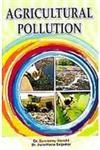Agricultural Pollution -Hardcover
Agricultural Pollution -Hardcover
Couldn't load pickup availability
A wide range of contaminants can reach the river either via groundwater or through drainage ditches, including artificial fertilizer residues, insecticides, herbicides, pesticides and farmyard waste, all of which are potentially very harmful. Accidental milk spillage from dairies is a serious contaminant. Undiluted animal manure (slurry) is one hundred times more concentrated than domestic sewage, and can carry a parasite, Cryptosporidium, which is difficult to detect. Silage liquor (from fermented wet grass) is even stronger than slurry, with a low pH and very high BOD (Biological Oxygen Demand). With a low pH, silage liquor can be highly corrosive; it can attack synthetic materials, causing damage to storage equipment, and leading to accidental spillage. Milk spillage, silage liquor, cattle and pig slurry; these are all examples of point source pollution. Diffuse source pollution from agricultural fertilizers is more difficult to trace, monitor and control. High nitrate concentrations are found in groundwater and may reach SQmg/liter (the EU Directive limit). In ditches and river courses, nutrient pollution from fertilizers causes eutrophication. This is worse in winter, after autumn ploughing has released a, surge of nitrates; winter rainfall is heavier increasing runoff and leaching, and there is lower plant uptake. Phytoplankton and algae thrive in the nutrient-rich water. Normally, .blue-green algae are very important in the river ecosystem, photosynthesizing sunlight energy, and liberating oxygen into the water.
Share

